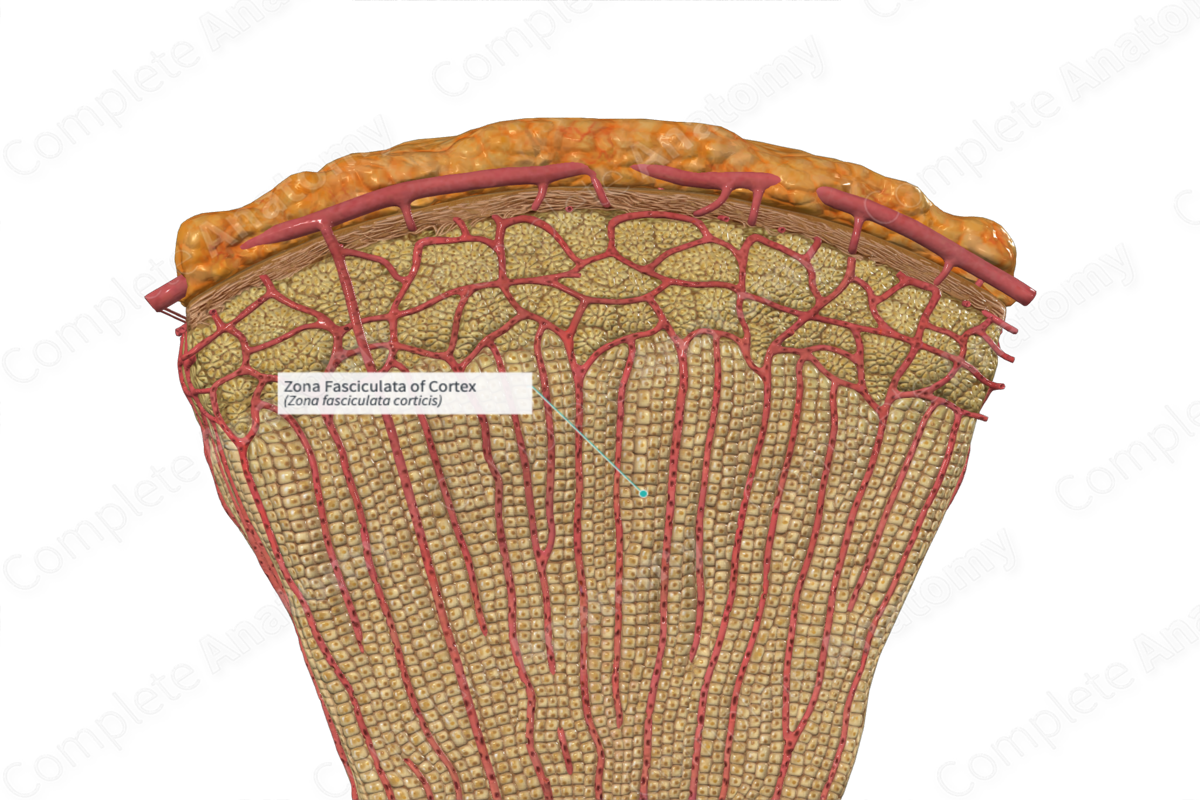
Quick Facts
The zona fasciculata is the thick middle layer of the suprarenal cortex; it is the major source of glucocorticoids (Dorland, 2011).
Related parts of the anatomy
Structure and/or Key Feature(s)
The cortex of the suprarenal gland is comprised of three distinct morphological zones, the zona glomerulosa, zona fasciculata, and the zona reticularis. These lie above the medulla of the suprarenal gland. The zona fasciculata is the large zone of the suprarenal cortex and composes nearly 75% of the cortical mass.
The zona fasciculata is made of cells which are large and polyhedral. These are aligned together to form linear columns, which run the depth of the zona fasciculata. Long sinusoids from the capsular plexus travel alongside these cellular columns, supplying the cortex throughout. The sinusoidal paths end as they come together in the zona reticularis to form a vascular network.
Inside the cells of the zona fasciculata, prominent organelles include a large amount of smooth endoplasmic reticulum present in the basophilic cytoplasm, as well as a large number of lipid droplets. These store cholesterol, the main precursor of steroid biosynthesis. These are important organelles as they relate to the cell’s primary function (Pocock, Richards and Richards, 2013).
Anatomical Relations
The zona fasciculata is the intermediate layer of the suprarenal cortex, surrounding by the zona glomerulosa on the outside and the zona reticularis on the inside.
Function
The primary function of the cortex is to produce steroid hormones. In particular, the zona fasciculata secretes glucocorticoids, such as cortisol. These glucocorticoids are involved in, anti-inflammatory and immunosuppressive processes. They also have a physiological role in the metabolism of carbohydrates and proteins.
Clinical Correlates
—Cushing’s syndrome
References
Dorland, W. (2011) Dorland's Illustrated Medical Dictionary. 32nd edn. Philadelphia, USA: Elsevier Saunders.
Pocock, G., Richards, C. D. & Richards, D. A. (2013) Human Physiology, 4 edition. OUP Oxford.
